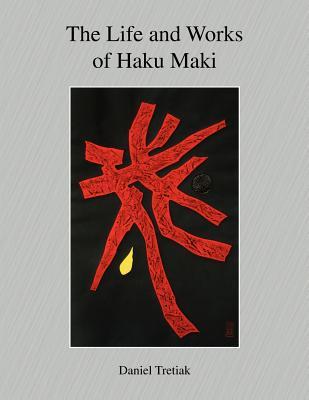
To obtain the embossed effect, Maki used wet cement into which he carved the basic design for a print. After the design settled and was carved, Maki used double-layered paper, raising the subject from the surface of the paper.
Maki's oeuvre is characterized by clean, sharp images, whether done in black kanji on a white background or in a bright color against a dark background. His prints usually contain one outstanding object, whether kanji or a ceramic vessel or a persimmon. The viewer 1/2s gaze is directed strictly to the subject 1/2the background is not allowed to distract.
Maki's prints invariably have a modern look and feel to them 1/2they fit in the early 21st century just as well as they did when they were first produced 20-30 years ago. Yet Maki's primary subjects are very traditional. His achievement was to rework and update the traditional, producing an image that delights and sometimes surprises the viewer as the old emerges, recognizable but new. With little fuss and few frills, Maki allows the viewer to concentrate on the core subject and nothing else. Very Zen.
To obtain the embossed effect, Maki used wet cement into which he carved the basic design for a print. After the design settled and was carved, Maki used double-layered paper, raising the subject from the surface of the paper.
Maki's oeuvre is characterized by clean, sharp images, whether done in black kanji on a white background or in a bright color against a dark background. His prints usually contain one outstanding object, whether kanji or a ceramic vessel or a persimmon. The viewer 1/2s gaze is directed strictly to the subject 1/2the background is not allowed to distract.
Maki's prints invariably have a modern look and feel to them 1/2they fit in the early 21st century just as well as they did when they were first produced 20-30 years ago. Yet Maki's primary subjects are very traditional. His achievement was to rework and update the traditional, producing an image that delights and sometimes surprises the viewer as the old emerges, recognizable but new. With little fuss and few frills, Maki allows the viewer to concentrate on the core subject and nothing else. Very Zen.
Paperback
$39.95